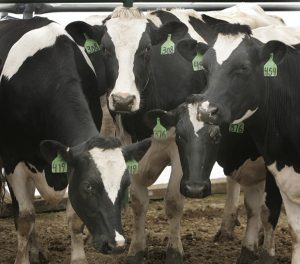Sure it’s almost 20 years old. But a reminder.
 Over a 12-month period, 588 cattle faecal samples and 147 farm environmental samples from three dairy farms in southeast Queensland were examined for the presence of Shiga-toxigenic Escherichia coli (STEC). Samples were screened for Shiga toxin gene (stx) using PCR.
Over a 12-month period, 588 cattle faecal samples and 147 farm environmental samples from three dairy farms in southeast Queensland were examined for the presence of Shiga-toxigenic Escherichia coli (STEC). Samples were screened for Shiga toxin gene (stx) using PCR.
Samples positive for stx were filtered onto hydrophobic grid membrane filters and STEC identified and isolated using colony hybridisation with a stx-specific DNA probe. Serotyping was performed to identify serogroups commonly associated with human infection or enterohaemorrhagic Escherichia coli (EHEC). Shiga-toxigenic Escherichia coli were isolated from 16.7% of cattle faecal samples and 4.1% of environmental samples. Of cattle STEC isolates, 10.2% serotyped as E. coli O26:H11 and 11.2% serotyped as E. coli O157:H7, and the E. coli O26:H11 and E. coli O157:H7 prevalences in the cattle samples were 1.7 and 1.9%, respectively.
Prevalences for STEC and EHEC in dairy cattle faeces were similar to those derived in surveys within the northern and southern hemispheres. Calves at weaning were identified as the cattle group most likely to be shedding STEC, E. coli O26 or E. coli O157. In concurrence with previous studies, it appears that cattle, and in particular 1-14-week-old weanling calves, are the primary reservoir for STEC and EHEC on the dairy farm.
A longitudinal study of Shiga-toxigenic Escherichia coli (STEC) prevalence in three Australian diary herds
Veterinary microbiology, Volume 71, Issue 1-2, Pages 125-37, Jan 1, 2000
